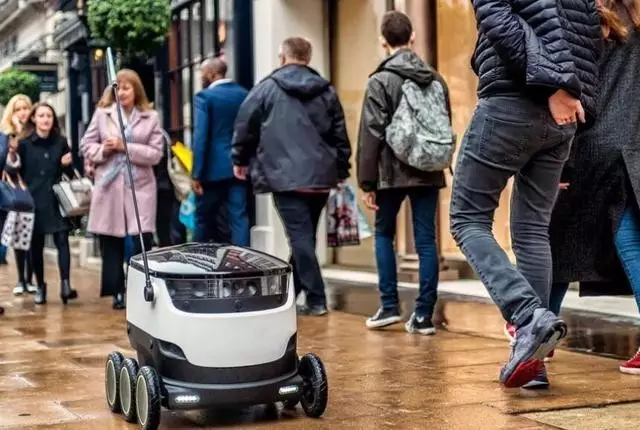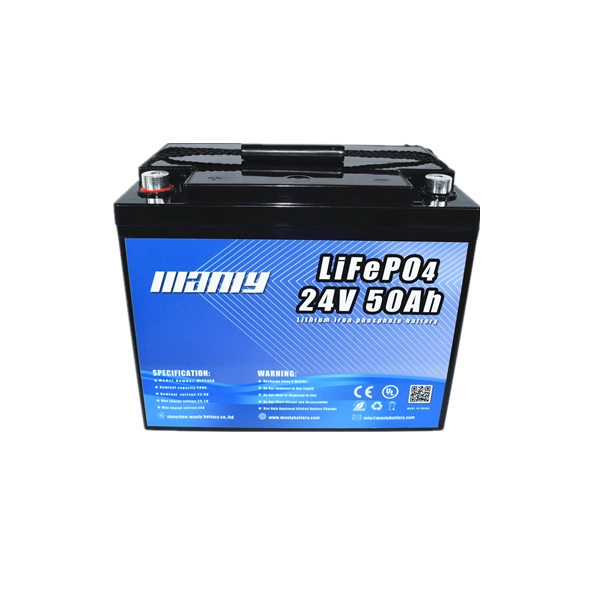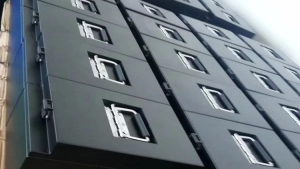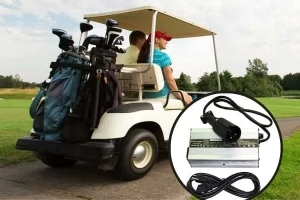Future of Food Delivery Service: Robots and Lithium Battery
Table of Contents

The Rise of Food Delivery Robots
In recent years, the food delivery landscape has witnessed a revolutionary shift with the introduction of food delivery robots, a testament to the innovative strides in automation and technology. This evolution is not just about convenience; it's a response to a changing world, where efficiency and safety in delivery services have become paramount.A Pioneering CollaborationA notable milestone in this journey was when Uber, the American ride-hailing giant, announced a groundbreaking partnership with Mitsubishi Electric, a behemoth in the industrial sector, and Cartken, an American robotics startup. This collaboration aimed to launch autonomous food delivery robots in Japan, marking the country as the second in the world, following the United States, to adopt robot food delivery services. The initiative, which started in Tokyo by the end of March, represents a significant leap towards integrating robotics into everyday life.The Cartken ModelThe robots at the forefront of this initiative are from Cartken, founded in 2019 by former Google employees in Oakland, California. Their Model C robot, designed to navigate through environments with artificial intelligence and computer vision technology, epitomizes the advanced capabilities of modern robotics. Measuring 71 cm in length, 46 cm in width, and 60 cm in height, and capable of carrying up to 20 kg, these robots are designed to move at a pedestrian-friendly speed of 5.4 km/h.After customers place orders through a dedicated app, these robots embark from their standby locations to pick up the orders from stores and deliver them to the designated locations. What sets these robots apart is their ability to navigate sidewalks, avoid obstacles, yield to pedestrians, and even obey traffic signals. Equipped with a thermal container, they ensure the food remains at the desired temperature throughout the delivery process, mirroring the efficiency and care of human delivery personnel.Expanding HorizonsThis collaboration between Uber Eats and Cartken is not their first. Prior initiatives in Miami and Fairfax, Virginia, have already showcased the potential of robot food delivery services. Uber Eats has also explored partnerships with other robotics companies like Motional, Nuro, and Serve robotics, piloting food delivery robots in various U.S. cities. These efforts reflect a broader strategy by Uber to diversify and innovate within its service offerings, especially in light of the financial challenges faced by its autonomous driving ventures.A Strategic PivotUber's pivot towards enhancing its food delivery service with robots comes at a crucial time. The company, originally known for its ride-hailing service, has seen a significant transformation in its business model. The pandemic era, in particular, sparked explosive growth for Uber Eats, with the service's revenue surpassing that of its ride-hailing business for consecutive quarters. The latest financial reports from Uber highlight a sustained profitability streak, underscoring the pivotal role that the food delivery service, powered by innovative solutions like delivery robots, plays in the company's success.The Role of Lithium BatteriesCentral to the operation of these food delivery robots is the lithium battery, particularly the LiFePO4 lithium battery, known for its durability, high energy density, and rapid charging capabilities. These batteries are the lifeline of food delivery robots, enabling them to meet the demands of continuous, efficient service delivery. As food robot delivery services continue to expand, the importance of reliable, high-performance lithium batteries becomes increasingly evident, highlighting a growing market for these essential components.The rise of food delivery robots is not just a trend; it's a glimpse into the future of food delivery. As we move forward, the synergy between robotics technology and lithium battery innovation will continue to play a crucial role in shaping this dynamic industry.The Heart of the Operation: Lithium Batteries
At the core of the burgeoning food delivery robot revolution lies an unsung hero: the lithium battery. This pivotal component is what enables these autonomous couriers to navigate our streets, delivering meals with efficiency and reliability. Understanding the role of lithium batteries, particularly the LiFePO4 lithium battery, in powering these robots provides insight into the future of food delivery services.Unparalleled Energy EfficiencyLithium batteries, known for their high energy density, are the preferred power source for food delivery robots. This characteristic allows the robots to operate for extended periods without the need for frequent recharging, making them ideal for the demands of continuous delivery services. The LiFePO4 lithium battery, a type of lithium-ion battery, stands out for its stability, safety, and long life cycle, ensuring that robots can deliver food efficiently across urban landscapes.Durability and SafetyThe operational environments for food delivery robots can be challenging, with varying weather conditions and the need to navigate through crowded urban spaces. LiFePO4 lithium batteries are renowned for their robustness and ability to withstand harsh conditions, including high temperatures, which are common in outdoor settings. Moreover, these batteries offer significant safety advantages, such as resistance to overheating and lower risk of leakage, which are critical for ensuring the safe operation of robots in public spaces.Sustainability and Environmental ImpactAs the world moves towards greener solutions, the environmental impact of technology cannot be overlooked. Lithium batteries, especially LiFePO4 types, are more environmentally friendly compared to traditional battery technologies. They contain no heavy metals or toxic materials, making them a more sustainable choice for powering devices that are becoming an integral part of our daily lives. Additionally, their longer lifespan reduces the need for frequent replacements, contributing to less waste.How Do Food Delivery Robots Work with Lithium Batteries?Food delivery robots equipped with lithium batteries navigate using a combination of GPS, artificial intelligence, and computer vision technologies. These batteries provide the necessary power for the robots' motors, sensors, and communication systems, enabling them to avoid obstacles, recognize traffic signals, and safely reach their destinations. The efficiency of lithium batteries ensures that these robots can cover significant distances on a single charge, making them a reliable option for food delivery services.MANLY Lithium Battery Offerings for Food Delivery Robots
In the dynamic world of food delivery, where efficiency and reliability are paramount, MANLY Battery's lithium battery solutions stand at the forefront of innovation. As the demand for food delivery robots continues to surge, the need for high-performance, durable, and safe power sources has never been more critical. Enter MANLY Battery's lithium battery offerings, designed specifically to meet and exceed the rigorous demands of robot food delivery services.A Legacy of Excellence and InnovationWith over a decade of excellence in the battery manufacturing industry, MANLY Battery has established itself as a leader in the field. Its state-of-the-art production facilities, sprawled over 65,000 square meters across prime locations in China, including Shenzhen, Dongguan, and Huizhou, underscore its commitment to quality and innovation. MANLY Battery's daily production capacity is a testament to its capabilities, with thousands of battery cells and packs produced every day to meet the growing demands of the market.Tailored Power Solutions for Every NeedMANLY Battery's product range includes a wide variety of LiFePO4 and lithium-ion batteries, ranging from 6V to 72V, catering to a broad spectrum of applications. This versatility ensures that whether for solar energy storage, advanced robotics, or food delivery robots, MANLY Battery has the right battery to power your needs. Its bespoke battery services allow for unparalleled customization, ensuring that each battery perfectly aligns with your specific requirements in terms of voltage, capacity, and aesthetics.Global Standards, Unmatched QualityMANLY Battery's commitment to excellence is reflected in the global certifications its products carry, including UN38.3, IEC62133, UL, and CE. These recognitions are not just badges of honor but a promise of quality, safety, and reliability. Coupled with a decade-long warranty commitment, MANLY Battery's batteries offer peace of mind, ensuring that your investment is protected for years to come.Safety and Performance Hand in HandSafety is a cornerstone of MANLY Battery's design philosophy. Its batteries are equipped with multiple safety features, including short circuit protection, overcharge safeguards, and overcurrent preventions. Designed to withstand severe impacts and offer flexible connection options, MANLY Battery's batteries ensure that your food delivery robots operate safely and efficiently, even in the most demanding conditions.Efficiency That Sets MANLY Battery ApartMANLY Battery's LiFePO4 batteries are a game-changer, offering an energy efficiency rate of 95%, significantly outperforming traditional lead-acid batteries. This efficiency translates into faster charging times and lower energy consumption, making MANLY Battery's batteries an ideal choice for food delivery robots that require quick turnaround times and long operational hours.Innovative Features for an Enhanced User ExperienceTo further enhance the user experience, MANLY Battery's batteries come equipped with modern features such as Bluetooth connectivity and intuitive battery level displays. These innovative additions not only make monitoring and managing battery life easier but also pave the way for smarter, more interactive food delivery services.Empowering the Future of Food DeliveryAs food delivery robots become an integral part of our daily lives, the need for reliable, high-performance lithium batteries has never been more evident. MANLY Battery's offerings are not just batteries; they are the lifeline of the food delivery robots, enabling them to meet the demands of a fast-paced world. With MANLY Battery's lithium battery solutions, we are not just powering robots; we are driving the future of food delivery, where efficiency, safety, and sustainability are intertwined.Dive into the future of efficient energy with MANLY Battery's lithium batteries, where legacy meets innovation, and power meets performance. Explore MANLY Battery's range today and discover how it can help power your journey towards a more efficient, reliable, and sustainable food delivery service.




















